In How to Grow Your Small Business, author Donald Miller shares a six-step guide designed to help you build and run your business like a pro.
It’s a straight-talking business book written for people who want to stop guessing and start growing. If you’re juggling a 9-5, chasing a business idea, or overwhelmed by where to start, this book speaks your language.
He doesn’t just offer ideas—he gives you structure. You’ll walk away knowing how to create clarity, market smarter, and sell with confidence. If you’re tired of winging it, this is your blueprint.
Table of Contents
Detailed Summary of How to Grow Your Small Business by Donald Miller
Donald Miller wrote How to Grow Your Small Business to help you stop guessing and start leading with structure. He built his own company from scratch and shares a six-part plan that covers what most small business owners ignore until it’s too late.
He starts with your mission. Not a fancy slogan. A clear, measurable goal with a deadline and purpose that actually gives your team direction.
Then he shows you how to market without sounding like a billboard. You position your customer as the hero. You’re the guide. Your product is the tool.
He also teaches you how to sell without feeling awkward. No scripts or fake urgency—just solving a real problem for the right people. Think of it as having a useful conversation that ends in a sale.
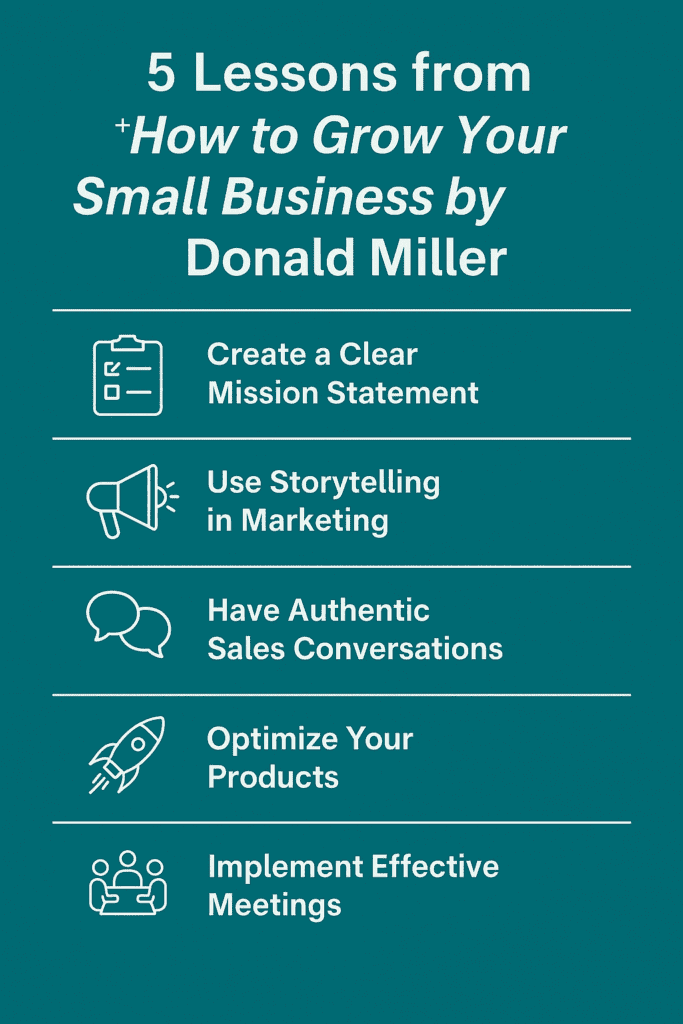
Next, he talks about your products. You figure out what actually works and stop wasting money on what doesn’t. You test new ideas smartly before going all in.
Operations come next. He fixed his bloated team by running five types of meetings. No fluff. Just clear communication, priorities, and momentum.
Last is cash flow. He breaks it down into five simple accounts to stop you from mixing business with personal money and accidentally sinking your business.
If you’re trying to build something on the side, or you’re stuck and not sure what to fix first, this book shows you where to focus. It’s a practical map for making your business less chaotic—and finally getting some control.
5 Lessons from How to Grow Your Small Business by Donald Miller
If you’re trying to figure out how to turn your side hustle into something real—or you’ve started something already and feel like you’re drowning—this part is for you. Donald Miller wrote How to Grow Your Small Business because he was in the same spot once. Confused, overwhelmed, and unsure how to grow something that wouldn’t collapse from burnout or bad decisions.
Here are five lessons from the book that give you a clear, practical way to move forward:
1. Your Mission Statement Should Actually Do Something
Most mission statements are just feel-good lines that live on a website and collect dust. Miller says that’s useless.
He breaks it down into three things:
- Pick three economic goals. Make them specific and measurable. For example: grow email list to 10,000, hit $5,000/month in profit, and reduce expenses by 20%.
- Set a deadline. No long-term dreams. Two years max. It creates urgency and keeps your focus tight.
- Tie it to a purpose. Why does this business matter? Who are you helping? Why should anyone care?
Once you have that mission, post it where you can see it. Use it to make decisions. Review it often. If your energy is scattered, this will help you center everything.
If you’re just winging your business right now, this step alone can save you months of confusion.
2. Sell with Story, Not Hype

You don’t need fancy ads. You need to tell the right story.
Miller teaches you to stop putting your product in the spotlight. Your customer is the hero. You are the guide.
Here’s how he breaks it down:
- What’s the real problem your audience has? Not surface-level. Go deep. What are they frustrated about?
- How does your product solve that? Position it as the tool they need to win.
- Map a clear path. 3–4 steps. No friction. No confusion.
- Tell them what to do. “Click here,” “Buy now,” “Book a call.” Be direct.
Let’s say you’re selling Canva templates. Don’t say “best aesthetic designs.” Say: “Tired of wasting hours on social media posts? Pick a template, tweak it, post in 10 minutes.”
People aren’t looking to buy stuff. They’re trying to solve problems. Your story shows them how to get there.
3. Make Sales Conversations Feel Like Real Conversations
If selling makes your skin crawl, this part is gold.
He says stop trying to push your product on everyone. You’re not selling to everyone. You’re solving a problem for a specific type of person.
Start by asking the right question.
For example, let’s say you’re a personal trainer. Instead of saying “I offer fitness coaching,” ask, “Have you ever signed up for a gym and quit in two weeks?”
If they say yes, you’re in. Then explain how your 3-step system keeps people going.
- Step 1: Personalized plan
- Step 2: Weekly check-ins
- Step 3: Habit tracking
That’s it.
If they’re not a fit, move on. No pressure. No guilt. No weird energy.
Selling this way feels better for both sides. You’re helping, not convincing.
4. Focus on What Works, Drop the Rest
You probably have a bunch of ideas or offers. And if you’re like most of us, you’re not sure which ones are worth the effort.
Miller says your business is like a plane. The products are the wings. If they’re weak or unbalanced, the whole thing crashes.
He suggests:
- Look at your current products or offers.
- What’s actually making you money?
- What’s draining you with little return?

Cut the dead weight. Keep the strong ones. Improve what’s already working before chasing the next big thing.
And before launching something new, write a quick product brief:
- Who is it for?
- What problem does it solve?
- What does it cost to make and market?
- Who else is selling it?
Don’t skip this part. You’ll avoid wasting money or burning out on products that don’t go anywhere.
5. Get a Grip on Your Operations Before You Burn Out
Miller realized that as his company grew, his team started losing direction. People were working hard but not smart. So he created five meetings to bring clarity back.
You don’t need a big team to use this. Even if it’s just you or you and one VA, this structure still helps:
- Weekly team meeting. Share updates. Reconnect to your mission. Set weekly goals.
- Leadership check-in. If you’re solo, use this time to review what’s working and what’s not.
- Daily 10-minute standup. List the top 1–2 things to focus on today.
- One-on-one coaching. Use this to help your assistant or co-founder stay aligned.
- Quarterly review. Look at revenue, expenses, and what to improve.
This might sound like a lot. But it brings order. It keeps you from working all day and still feeling like you got nothing done.
Your time and energy are your most limited resources. This helps you protect both.
That’s just a small part of what’s inside How to Grow Your Small Business by Donald Miller.
If you’re serious about growing something solid—even if you’re still figuring out what that is—this book will give you structure.
You’ll stop feeling like you’re guessing. And you’ll start running your business like someone who knows what they’re doing.
Wrapping It Up
If you’re tired of winging it and want a clear path to grow your business, How to Grow Your Small Business by Donald Miller gives you that clarity.
He doesn’t speak in theory—he hands you tools. Whether you’re starting out or already running something, these lessons help you simplify, focus, and move forward with confidence.
And if you’re still figuring out what to build or how to start learning a skill fast, I wrote another blog post that’ll help. Go read my summary of The First 20 Hours by Josh Kaufman. It’s the perfect next step.
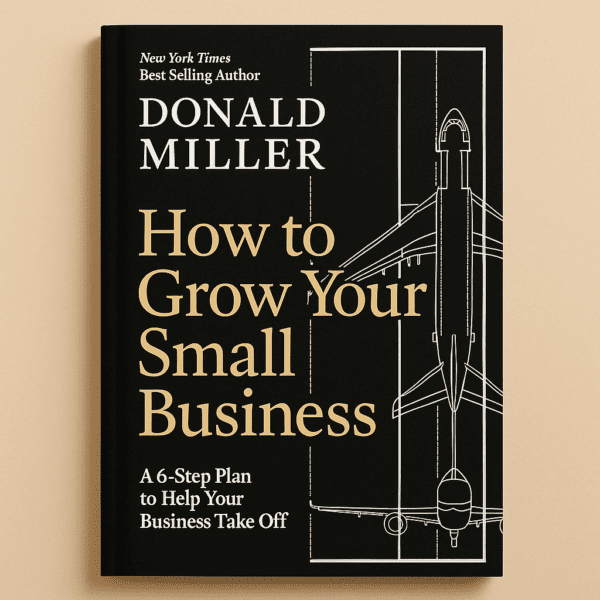
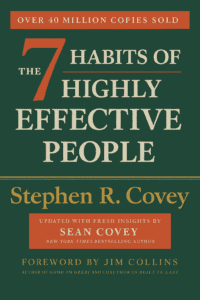
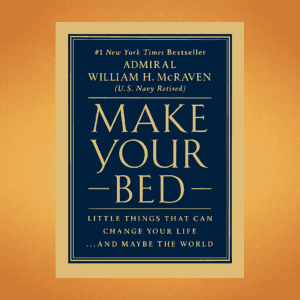
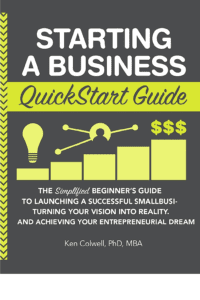
Pingback: Deep Work by Cal Newport (5 Lessons Plus Book Summary) - Business